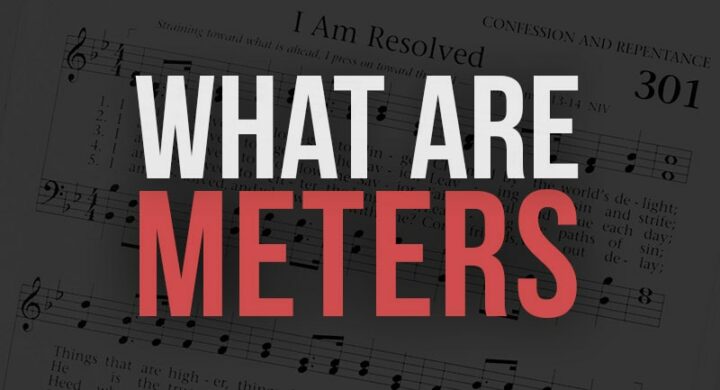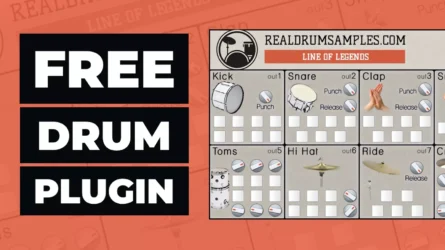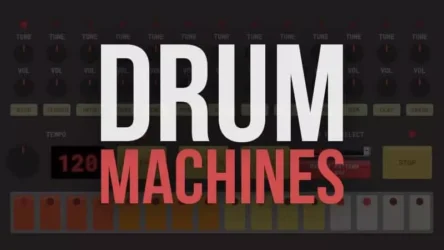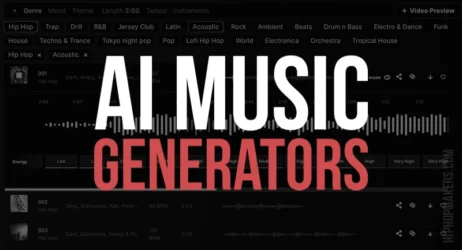In this guide we will answer what is a meter in music, explain the different types of meters, and provide examples of meters in music to make you a pro.
- What is a Meter in Music
- Types of Meters in Music
- How Many Beats In A Meter
- What Is a Simple Meter in Music
- What Is a Complex Meter in Music
- What Are The 6 Meters In Music
What is a Meter in Music?
A Meter ( or metre ) in music refers to the organization of bars and beats in music. Meters are written as a fraction or as an abbreviation indicating the number of beats in each bar. The most popular meter in music is 4/4 time. A meter is used to describe the rhythmic pattern of a piece of music.
A meter of two has two beats in each measure, and a meter of three has three beats in each measure. Whereas a meter of four has four beats in each measure.

A meter can be thought of as how you count the song. Or it can also be thought of as how many beats you would count if you would tap your foot.
For instance, if the song has a meter of 4 counts, then its pattern would be like this: 1-2-3-4, 1-2-3-4.
Note that rhythm is the basic feature of music, whereas the meter is the basic feature of a rhythm.
Meter is such an important part of music that if you can’t sense the meter of music, then you won’t be able to predict the flow of a beat.
But generally, it is quite easy to sense the meter for most people because our brain can automatically calculate that even if we aren’t trained in music.
Although if you want to play music, analyze what you hear, and many other music-related things, then having a strong understanding of meters can be helpful.
What Are The Types of Meters in Music?
Here are some of the types of meters in music:
#1. Simple Duple
The duple word in the simple duple meter means that there are two beats in each measure. At the same time, the word ‘simple’ means that each of these beats can be broken down into two notes.
For example, a 2/4 time signature is regarded as a simple duple meter. Here the word duple means that there are 2 beats in each measure. And simple means each beat can be divided into two notes.
Other examples of a simple duple meter include 2/2, and 2/8.
#2. Simple Triple
A simple triple meter consists of three beats in each measure, and the meaning of the word simple is the same.
For example, a 3/4 time signature is a simple triple meter because there are three beats in each measure, and you can divide each of the beats into two notes.
Other examples of a simple triple meter include 3/2, 3/8
#3. Simple Quadruple
A simple quadruple means that there are 4 beats in each measure, and they can be divided into notes.
For example, 4/4 is a simple quadruple meter as there are 4 beats in each measure, and each of these beats can be divided into two notes.
Other examples of a simple quadruple meter include a 4/2, 4/8.
#4. Compound Duple
Beats in the simple meter are divided into two notes, but in the compound meter, the beats get divided into three.
So in a compound duple meter, beats are grouped into two, and each beat gets divided into three.
The example of this meter can be considered as 6/8. It is important to notice that each beat in the 6/8 is a dotted quarter note.
In any time signature, if the top number is 6 then it is going to be a compound duple meter.
#5. Compound Triple
In a compound triple meter, beats are grouped into three and divided into three. For example, consider the 9/8. In it, there are three beats (three-dotted quarter notes) that make the meter triple, and each beat is made up of three notes which makes the meter compound.
Remember that any time signature that has a 9 on top is called a compound triple meter.
#6. Compound Quadruple
In a compound quadruple meter, beats are grouped into four and divided into three. For example, consider 12/8, in which there are four beats that make the meter quadruple, and each beat is made up of three notes and hence compound.
Time signatures that have 12 on top are usually the compound quadruple meters.
How Many Beats Are There In Every Meter?
The number of beats in each measure mainly depends on the type of meter. For example, if a meter is a simple duple meter, there are two beats in each measure, and the meter is called a simple meter because each can be broken down into two notes.
In a simple triple meter, there are three beats in each measure. In a simple quadruple meter, there are four beats in each measure.
What Is a Simple Meter in Music?
A simple meter is a meter in which each beat can be divided into two equal parts. The top number of a time signature will usually be 2,3,4, etc.
For example, 3/4 refers to a simple meter and, in fact, a simple triple meter because there will be three notes in each measure, and each of the beats can be divided into two notes.
What Is a Complex Meter in Music?
Apart from the simple and compound meters, there’s also another meter known as the complex meter, which is a meter that doesn’t fall into the category of duple, triple, or quadruple, including most odd numbers and the unusual beats per measure.
Note that in a simple meter, each beat unit is divisible by two. Whereas, in compound meter, each beat unit is divisible by three.
But a complex meter includes simple as well as compound beats.
What Are The 6 Meters In Music?
When you tap your foot to your favorite song, you are actually following the song’s “beat” or “meter”. In music, a meter refers to the rhythmical pattern of stressed and unstressed beats, or pulses, in a piece of music. Now, let’s explore six common types of meter in music.
1. Duple Meter: This is one of the simplest meters to understand. Think of a heartbeat – “thump-thump, thump-thump”. In duple meter, music is organized into sets of two beats. Many nursery rhymes and children’s songs, like “Row, Row, Row Your Boat”, use this meter.
2. Triple Meter: You know how people always say “I love you” in three words? Well, some songs express their feelings in groups of three beats. That’s triple meter. A perfect example is a waltz, which always has three beats in a measure. When you listen to a song like “Amazing Grace”, you’ll notice this 3-beat rhythm.
3. Quadruple Meter: This one is pretty popular in many styles of music, including pop and rock. Quadruple meter is like a pattern of four beats – one, two, three, four, then repeat. When you listen to the “Star-Spangled Banner”, our national anthem, you hear quadruple meter in action.
4. Compound Meter: Here’s where things get a little more complicated. Compound meter takes our basic meters (duple, triple, quadruple) and adds another layer to them. This means each main beat is divided into three smaller beats. A famous example is “America” from West Side Story, which uses a compound duple meter.
5. Irregular Meter: This is the rule breaker of the music world. The irregular meter doesn’t stick to simple sets of two, three, or four beats. Instead, it might have five beats, seven beats, or any unusual number. “Money” by Pink Floyd is an example, which uses a unique 7-beat pattern.
6. Mixed Meter: This is the “choose your own adventure” meter in music. Mixed meter means that the beat pattern changes throughout the song. So, it might start with three beats per measure, then switch to four beats, and so on. “Bohemian Rhapsody” by Queen is a popular song with mixed meter.
Remember, meters are just one piece of the big music puzzle, and they work alongside elements like melody, harmony, and tempo to create the songs we love to hear.
By listening closely, you can start to recognize these meters in your favorite tunes!
Music Meter Overview
Meters refer to the organization of bars and beats in music. The number of beats in a bar is expressed in meters, either as a fraction or abbreviation. The most popular meter in music is 4/4 time. A meter describes a piece of music’s rhythmic patterns.
In our exploration of music theory, I’ve looked closely at the concept of a meter in Western music. I’ve shared that the meter is a basic time unit, pivotal to understanding musical rhythm and how it helps form a metric framework for a composition. It’s fascinating to see how it influences different meters, like simple meters, and how these affect our perception of strong and weak beats in a rhythmic stream.
For music enthusiasts and even college-level musicians, the understanding of meter and time signatures is key to advancing performing skills and for music analysis. Whether you’re examining regional music or studying famous piano solos, you’ll find these tools invaluable. From basic meter to the idea of metric displacement or rhythmic displacement, these concepts are all vital to understanding the written music and the very moment when one beat transitions to another.
This understanding also enhances our appreciation of how composers use these tools. For example, in tonal music and in both traditional and popular songs, the first beat is often the strong beat, helping to create engaging music. This is also observed in dance music, where a strong beat can be emphasized by bass playing. The composer explains the rhythm surface using music notation, where the note value, like an eighth note, and rhythmic notation play key roles.
I’ve seen how different elements, from the weak beats to many different surface rhythms, produce temporal regularity in a piece. This forms a crucial part of the process to create music, not just for one rhythmic stream, but potentially for multiple layers of rhythm. It’s these nuances that breathe life into musical compositions, whether they’re expressed through one metric unit or several.
I hope we answered what is a meter in music. If we missed anything, please share it in the comments.




